Hello and welcome to part three of the thrilling series ‘terrible movies to love.’ This edition follows the movie The Man From Hong Kong. I watched it by mistake as part of this ridiculous 100 movies, 100 years challenge I’ve set myself. I thought it was from 1974, but it’s actually from 1975.*1 It was a very serendipitous mistake, as watching it was an utter joy. I’ve only seen it once, but it’s already in my ‘terrible movies to love’ pantheon. The plot involves a Hong Kong Special Policeman who comes to Sydney and single-handedly breaks up a drug ring.
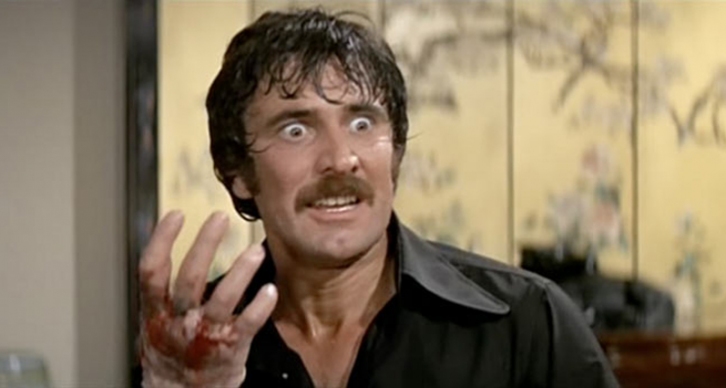

It was also by the same director who would later make BMX bandits, a movie I’ve seen because a childhood friend of mine’s house was in it (I grew up in Sydney). Other than that, it just burrowed into my whisky soaked brain, and I didn’t hunt it down, but was happy to come across it a decade later on channels which usually show episodes of Columbo.
The movie is a joint Hong Kong and Australian production, and in terms of sensibilites and outcome, that shows. There’s a lot of things which seem to be put in as a courtesy to the other side, presumably both of these are attempts to best sell the movie to both Asia and the West. It doesn’t always work, there’s a lot of great scenery around, and it mixes some Asian sensibility with the vaunted Australian laid-backness of the Australian cops (one of the more incorrect stereotypes I know – Australian police are not to be messed with). On the whole, this ‘collusion’ of styles barely works, despite the cast.
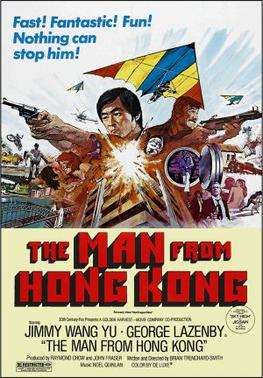
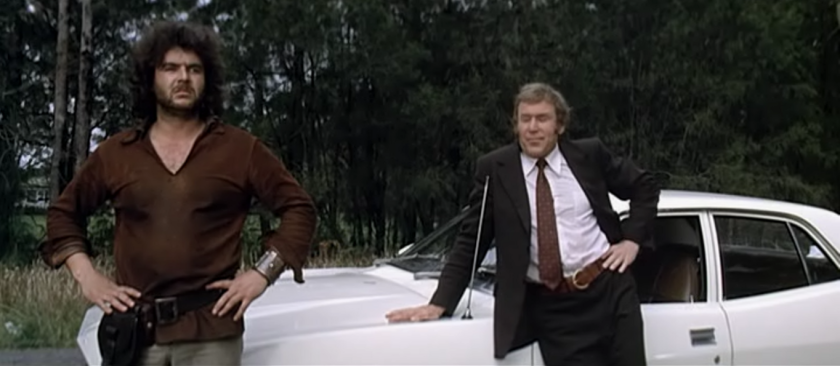
On a further note, the chubby guy who has a fight on Uluru (yep, that happens) is a young Sammo Hung, who would go on to far greater things in later life, but had already fought Bruce Lee in Enter the Dragon just a couple of years earlier. Stuntmen from the more famous Mad Max and Stone were also involved. The result is that it’s a heady mix of soon-to-be respected character actors, former stars, and the most maniacal stuntmen and bizarrely dressed fighters the land had to offer, and it’s a true treat.
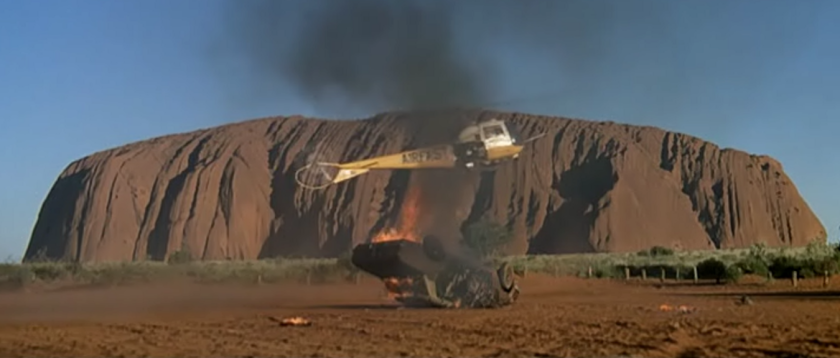
The movie starts off with a fight, drug bust and one of several inexplicable explosions of a car. What sets this aside is that it takes place at the magnificent Ayers rock, with the fight taking place on the rock itself. It looks great, and ignores the obvious impracticality that Ayers rock is so remote and difficult to get to, it would be the last place to do a drug deal, especially when you’re travelling by bus, as Sammo is. This impracticality is seen throughout the movie. Sammo is arrested, and Inspector Fang Sing-Ling is brought in to question him (and seemingly to translate, too – were there no other people who can speak Cantonese in Sydney at the time? Why bring Sammo from the Northern Territory to Sydney anyway? Two men come to his house and he fights them in his pajamas, but nothing more is commented on this, why? These and many more questions should be acknowledged but are rightly ignored for the sake of entertainment). When he arrives, he’s taken by two Australian policemen to the Opera house for tea and they have a plot-moving conversation. The airport and the opera house are at least hours drive, they easily could have talked about it on the ride over.
It was at this point that I noticed that after only 15 minutes of this movie, we had seen:
- Two people fighting on Ayers Rock
- A helicopter chase which ended in a car exploding
- The action moves to Hong Kong where…
- There is a hanglider crash
- The introduction of Inspector Fang Sing-Ling (who always says his full name), first seen demonstrating kung-fu by beating a group of shirtless students.
- Some mixed-race sex, complete with uncomfortable kissing between Inspector Fang Sing-Ling and the woman who rode the hang-glider.
- Scenic shots of both Hong Kong and Sydney.
- A vague plot outline given by the two Australian policemen
That’s a lot to happen in 15 minutes. They also tell us that gambling is illegal in Sydney, which it seemingly was at the time. The irony is, that since about 2004, there’s a casino the size of a large town just a few hundred meters away from where they are sat. This also serves as a history lesson for me, as I grew up in Sydney and am always keen to see evidence from before its rise to world city, when it was the rough and tumble city with a famous bridge that I remember from my childhood.
Something similar happens at the crown courts, which were then surrounded by cheap looking businesses and shoddy housing, but is now full of rich idiots in fancy buildings. It truly has come a long way since I was a kid.
Back to the, uh, plot. Sammo Hung is ‘interrogated’ (aka savagely beaten), the idea is that he will testify in Australian court, before he is then taken back to Hong Kong. He’s assassinated, the policeman kills the sniper and follows links to George Lazenby’s (his character name is Willard)’s company, and from then on these two seek to destroy each other. That’s all we need to know of the story, as it’s an excuse to hang a few jokes on, hang even more action scenes, throw in some romance, and tie it all together some of the most jarring ‘shoddy policework’ ever seen in movies. Without mentioning jurisdiction, a Hong Kong policeman murdering people in Sydney would still be bound by some sort of laws. At almost every point in the story Fang doesn’t involve his police colleagues, preferring instead to act as a long ranger. For that reason this movie would work much better as a revenge movie, but I think that would struggle to sell it to Asian audiences at the time.

The police are shown as either violent psychopaths – inspector Fang is a murderer who beats inmates and tortures hostile witnesses, while the two Australian police are shown as bumbling and probably corrupt: they act as a weird mix of Greek chorus and comic relief (see them fumble for the keys to unlock the handcuffs which tie them to the corpse of Sammo). Notably, they are absent from much of the action, instead passing comment on the havoc and mayhem that Fang has left in his wake.
The final showdown involves Fang forcing Willard to write a confession under duress – but the confession means nothing because he is murdered soon after. There’s a huge argument to be made that Fang should spend the rest of his life in prison, murdering people in jail. This is an action movie, but it’s still jarring how little attention is paid to the law itself, why not just make the vendetta personal instead of making him a policeman – a policeman can always call for backup, he never does. It really would work better as a revenge or gangster movie.
Back to the sniper, who is chased in a lengthy footrace through town, before an unbelievably long fight in the kitchens of a Chinese restaurant. The chase is interspersed with some great comedy and athleticism, and the fight is intense, but the whole scene doesn’t stand up to scrutiny. The police don’t arrive to help during the fight scene, Fang is able to catch up to a sniper, who by definition is a distance from the target. The sniper parked his motorbike a long way from the building where he did the hit, which allows for an awesome but confusing scene where Fang kicks the man off the moving motorbike (I think that this sniper was the same man who did the awesome stunts in the movie ‘Stone’ released a year before). It’s a ludicrous scene to think about, but it’s a lot of fun to watch. Crockery is thrown, kitchen items are used as weapons, boiling water is tossed, groins are grabbed and kicked, and at the end of it all, Fang has murdered the man despite being able to merely grapple him until the police arrive to help. His punch first, punch for several minutes, then can’t ask questions because everyone is dead attitude is amazing, and actually hinders progress in the investigations they make.
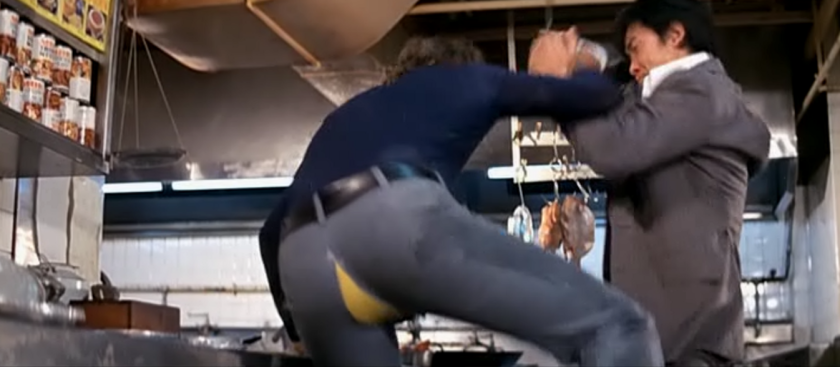
This is another of the problems with the movie: it’s supposed to act as an exhibition of Kung-fu – but all the fights last far too long and look vaguely ridiculous. Heads are kicked several times, and still they get up, again and again. There’s some good action in the fight, some humour in the chase scene – the two Aussies are too fat to keep up, a man is knocked off a ladder, another spills a box of oranges, but the whole thing is pointless. Fang kicks the unnamed sniper off a moving motorbike after a lengthy foot chase. It’s an awesome stunt, and requires great athleticism, but there’s no reason for him not to have parked his bike at the building he did the hit. It looks great, but doesn’t hold up to scrutiny, and what better metaphor for this movie is there?
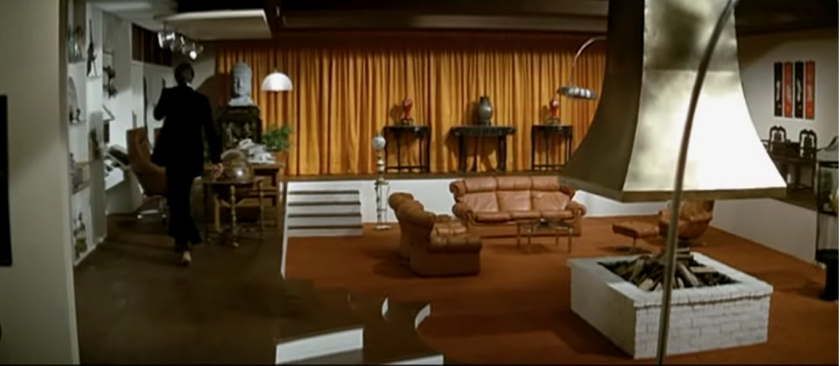
We’re shown later that killing the sniper makes Willard angry, and spurs him to take revenge on Fang. Fang manages to tie the death of Sammo to Willard by rifling through the snipers wallet for stupid reasons – he has a business card for his dojo – a dojo at which he was an expert, and this wouldn’t need a card because he’s there all the time.) On an investigation, an interaction between Fang and one of his underlings follows:
(what happened to the sniper)?
Fang: “I killed him”
Slimy accounts boss: “well in that case, you deserve a cigar”
*the cigar box is then used to crush his hand to get to see Willard.
When they finally meet, it’s at a beachside pool party at Willard’s place. George Lazenby is show William telling his girlfreinds by firing a crossbow at an apple on her head. The crowd is supposed to be the elite of Sydney, but the fashion is just ridiculous. He and Fang attempt to exchange a few one-liners, before a short fight breaks out which requires henchmen to intervene. Fang is able to identifiy a tattoo on a henchman from something he saw on the sniper he murdered, and is able to use that tattoo to find another place to investigate. It’s yet another example of the times changing: a tattoo was a rare thing to see on an Australian, and a Chinese person was a rare thing to see in Sydney. Both of those are untrue now, especially the tattoo thing, which seems to have become mandatory.
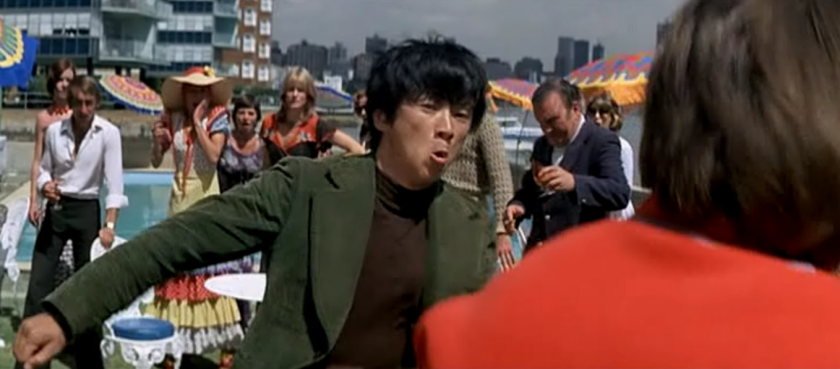
Willard makes a few disparaging remarks about the Asian race, for example, he tells him that he’s never seen a Chinese without a ‘yellow streak’. This, and a mention of yellow peril by Immortan Joe are the most jarring of remarks but the rest of the movie is surprisingly un-racist for the time, perhaps as a result of its international co-production. It’s got some issues, but at the end of the day, the Chinese cop is shown to be cool but charming (as most psychopaths are) and is not only able to undergo physical and emotional intimacy with beautiful white women, but is able to overcome enormous physical obstacles through his skill as a martial artists It’s certainly clumsy by today’s standards, but it’s not inherently racist, though I’m sure I could find people who would think otherwise.
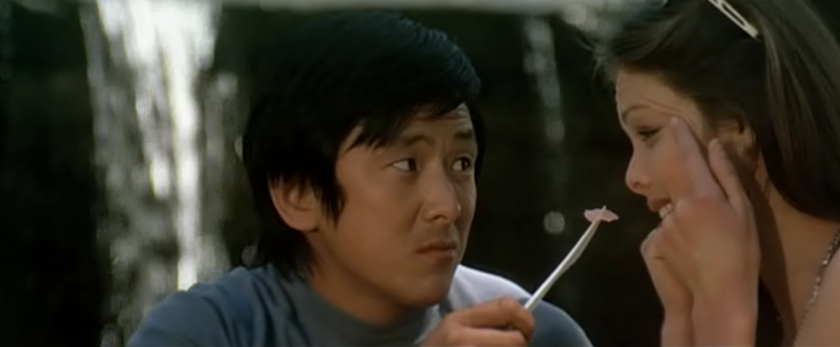
The next lengthy fight scene takes place in the gym. At nightfall, Fang climbs a drain for many floors in order to investigate (without a warrant or jurisdiction, this is also known as breaking and entering), and overhears a very specific, innuendo-free, drug-related phone call. Despite it being night, he’s found, and a group of ever-ready Asians in karate outfits is there to fight Fang. The fight is good, but ridiculous and overlong. Just checking back, it takes three full minutes for anyone to start using the weapons which line the room. Following this, Fang is cut and slashed so many times, and leaves others in bloody pulp. There are far too many groin kicks. There’s a fight on the top of the elevator, and before you can say ‘what just happened?’ he’s dying in the back of a van that he jumped onto.
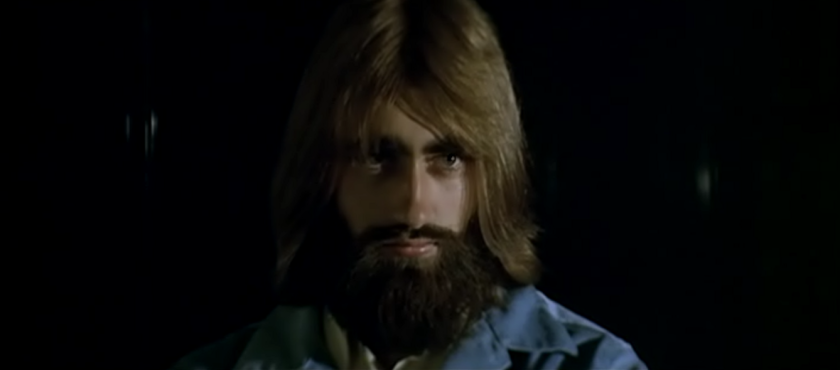
Luckily for him, it’s driven by two beautiful girls, one of whom can speak his dialect. He tells them that he can’t go to hospital for some reason – he could just call the police, who are technically his colleagues. Luckier for him, the taller, whiter one has a father who is a vet who lives in the country, and is willing to help. He tells us that Fang used willpower to control his blood pressure and reduce trauma from his attack. I’d like to remind people that positive racism is still racism.
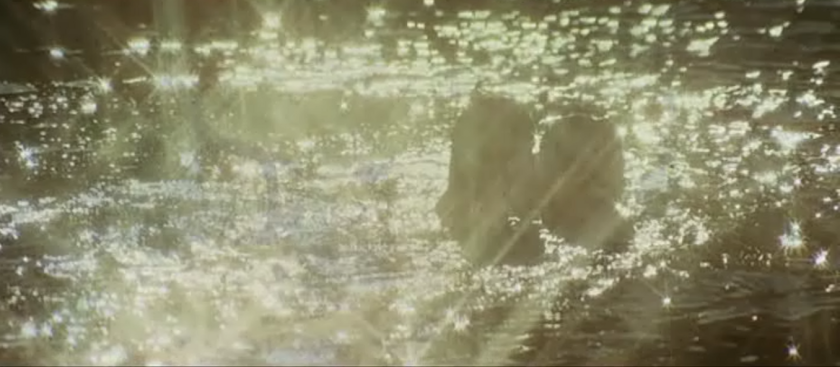
He’s then left to recuperate from a savage beating, multiple stab wounds, and presumably jet-lag – it’s unclear how long this takes, but it’s notable that he never contacts his friends in the Australian police force. I would have loved to see a shot of the two Australian detectives going to hospitals and morgues, fretting over their contact. Instead Fang spends his time romancing the daughter of the vet, riding horses and mucking around rusty pieces of metal which would definitely be full of snakes. She’s a lot taller than he is, and so most of their romancing takes place via montage and shots where she isn’t stood up. It finishes with some strange kisses and the immortal quote:
‘Do you think you’re recovered enough for me to make love to you?’
In case you’re wondering, the answer is yes. Following this powerful scene, he’s healthy enough to head back to Sydney, but Willard has tracked the van’s license plate and sent an assassination crew to take Fang out, once and for all. This involves sending three cars and a motorbike.
That a man who is shown as being powerful on a political and business level, sends only a motorbike and three beaten up cars as an assault force, tells us all we need to know about the man. Fang and the girl (I don’t think she’s actually named)’s car is blown up, and Fang just steals a car from a passerby. We’re not told what happened to the girl – last seen next to a flaming wreck of a car – and I imagined the man whose car was stolen and the girl making idle chit-chat as they wait for help.

What follows is a frenetic and entertaining piece of nonsense of a car chase. We’re told afterwards that all three of Willards drivers were armed, which makes no sense as none of them used weapons outside of the initial bomb which destroys Fangs car. Fang drives his car into the other cars, with the use of very powerful swings of the wheel, something I always notice in car chase scenes. violently moving your arms doesn’t make the car turn any faster than when you just do it naturally, so it’s only done to look cool – yet another great metaphor for this movie.
The scene has some great shots, it shows two cars just knocked off the side of a road, a construction site and a church picnic are driven through at speed, and before you know it, the motorbike is in the river, another car has exploded, and the last car was destroyed by Fang after driving through an obviously empty house. After he commits this vehicular homicide, he drives his stolen, beaten-up car back to Sydney where he calls the hang-gliding woman from the beginning to borrow her hang-glider to assault Willard’s fortified apartment building. This is the stupidest scene I could imagine, and yet I loved it.
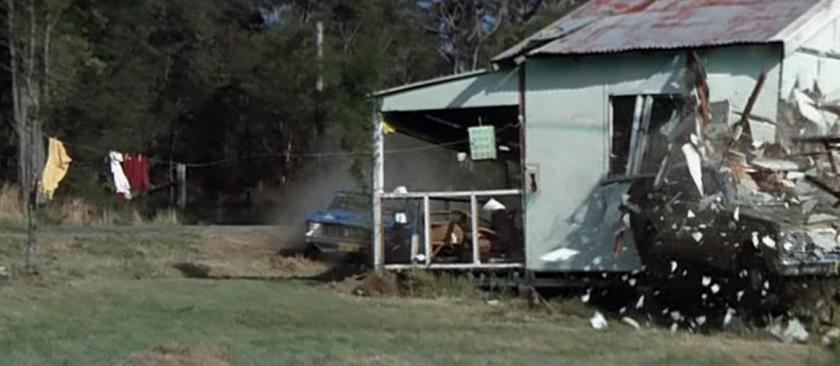
His final assault involves a hang-glider assault on Willard’s fortified compound in central Sydney. It doesn’t involve telling the Australian police or asking them for help. The shots of Fang hang-gliding in 1970s style (legs dangle, it looks unsafe), around 1970s Sydney, is amazing, and it’s underplayed with some of the bass-heavy music which infiltrates a lot of the movies of the time. However, it asks us to believe that no one saw a man land on the roof of a building which is being heavily surveilled and defended by hirsute henchmen. Lazenby sits in his apartment with an assault weapon, sipping whisky next to a very conspicuously placed fire. Scene set.
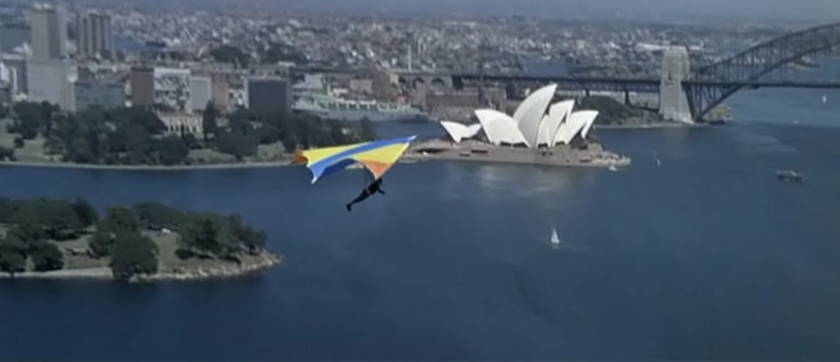
After a fight with a Noel Edmunds lookalike and some abseiling into Willards apartment, the two main characters fight to the death. Though it involves a former James Bond being set on fire, it is by some way the briefest fight in the movie. With Willard’s allies cutting through the fortified doors and closing in on the brawl Fang is able to force Willard to scrawl a confession, before tying a grenade around his head and throwing him into his own safe, which is filled with more explosives.
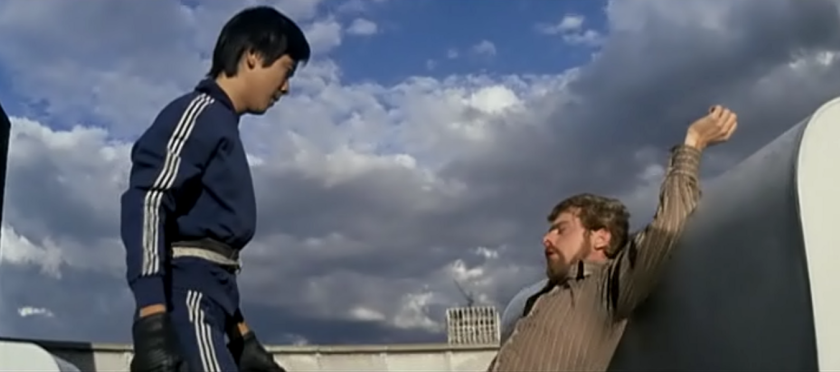
With a quick abseil-glide down the building, to our two bumbling Aussie police are shown in awe of the work that Fang has done, despite having been at the site of where he killed the man in the car only scenes before. When an explosion happens, which shows that not only is Willard dead, but his forced confession is unnecessary, the two burst into laughter, with only the unscrupulous Asian not laughing, It ends.
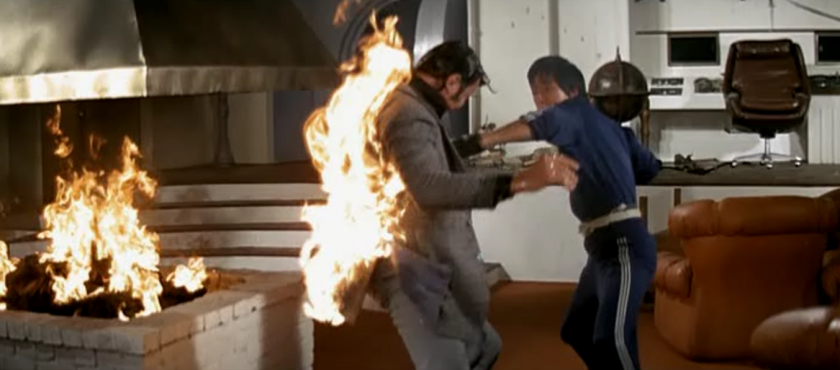
In conclusion, this is an amazing mix of action, too-long fight scenes, culture shock, and history lesson, this has to be seen just for how weird it is. With this and the Eiger sanction, 1975 may be my favourite ever year for heroes with terrible fashion sense and a need to get results. The Man From Hong Kong came out in 1975. The Eiger Sanction also came out in 1975. I like to think that somewhere on earth, someone saw both of those movies on the same day. That person would have gone insane.
See also:
Terrible Movies to love: [The Eiger Sanction] [The Warlord]
*1 I say mistake because it was of a year I’ve already seen, but there was a mistake made either by me or by the information given on the tv – I’ve watched The Love Guru and Hell Comes to Frogtown as a result of this. I’ll have to keep an eye on it to prevent it happening again.